California Solar Rebates and Incentives
How Much Can You Save on Solar in California?
Key Details
- California has the largest solar market in the US, with a total investment of $85.3 billion and 75,712 solar jobs in 2021.
- The Federal Solar Investment Tax Credit (ITC) offers a 30% tax credit for solar installations until 2032.
- A typical 6kW solar system costs $11,235 after taking advantage of the 30% federal solar tax credit
- The Net Energy Metering (NEM) program allows you to earn credits for any generated excess energy.
California Energy Profile
California is the fifth sunniest state in the United States. The Golden State receives 5,050 kilojoules per square meter (KJ/m2) of sunlight annually.
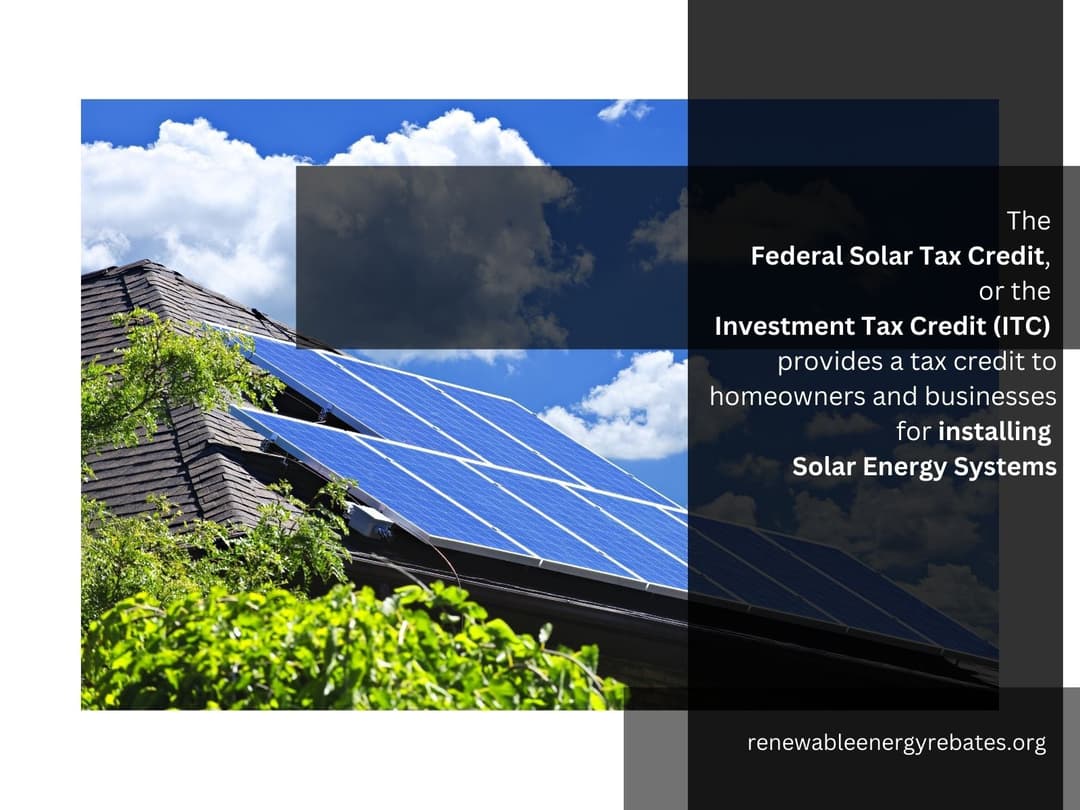
As of 2023, California has the largest solar market in the United States
- Percentage of State's Electricity from Solar: 27.3%
- Solar Jobs in 2021: 75,712
- Total Solar Investment in State: $85.3 billion
- 52% decline in prices in the last ten years
- Solar Companies in State: 2,378 (386 Manufacturers, 934 Installers/Developers, 1,058 Others)
- Growth Projection: 27,369 MW over the next five years
In terms of solar installations, California had 38,145 Megawatts (MW) of installed solar capacity in 2022, enough to power 10,510,648 homes.
California Solar Tax and Incentives at a Glance
| California Solar Incentives | State or Federal | Program Overview |
| Federal Solar Investment Tax Credit (ITC) | Federal | A tax credit equal to 30% of the total cost of your system. This is only usable once when filing taxes for the year the system was installed. |
| Self-Generation Incentive Program (SGIP) | State | Rebates for adding batteries to your solar panels. This is only usable once. Applied after enrollment |
| Single-Family Affordable Solar Homes (SASH) Program | State | Affordable financing for those who qualify (based on eligibility by income). This rebate is valid only once. The application is finished before installation. |
| Equity Resiliency Program | State | Additional incentives for battery installation. This is usable once. Eligible parties can only apply for it after registration. |
| Active Solar Energy System Property Tax Exclusion | State | Prevents tax increases due to switching to solar. It takes effect after installation. |
| Net Metering | State | Allows you to earn energy credits for all overproduction and use them to offset future utility bills. NEM 3.0 is the new policy as of 04/2023. |
| Local Incentives | Local | Offered by utility companies and municipalities in the state. |
How Affordable is Solar Energy in California?
As of 2023, the retail cost of grid electricity in California is 19.65 cents per kilowatt-hour. At the same time, the average cost per watt of solar is $2.68. In addition, the state had a net electricity generation of 197,165,106 Mwh.
| State | Number of solar Installations | MW Installed | Average cost for grip power (2021) | Cost per watts |
| California | 10,510,648 | 38,145 Megawatts | 19.65 cents/kWh | $2.68 |

As of February 2023, the average cost of solar panels in California is $2.68 per watt, making a typical 6000-watt (6-kW) solar system cost $11,235. This is after taking advantage of the 30% federal solar tax credit.
| State | Cost of installing a 6kw system | Federal tax credit value 2023 (30%) |
| California | $16,062.25 | $11,235 |
Federal Solar Tax Credit in California
What is the Solar Tax Credit?
The Federal solar tax credit, also known as the Solar Investment Tax Credit(ITC), is an energy incentive that allows Californians to claim credit up to 30% of the cost of installing a solar energy system.
It was set up in 2005 as part of the Energy Policy Act of 2005. Originally set to expire in 2024, it was extended in 2022 by the Biden Administration and is available through 2034.
The federal government revised the program, expanded the inclusion dates, and increased the credit percentage. As of 2023, the rates for credit are as follows:
- 30% for systems deployed from 2022-2032.
- 26% for systems deployed in 2033.
- 22% for systems deployed in 2034.
- In 2035, the program will be terminated and unavailable.

Which Solar Energy Systems Qualify for the Federal Tax Credit?
In 2023, homeowners who have installed solar panel systems can receive tax credits equal to 30% of the following:
- The cost of solar panels.
- Hardware costs for solar energy systems, including inverters, cabling, and mounting hardware
- Installation costs, such as those for permits and inspections, for solar panels.
Net Energy Metering in California
What Is Net Metering?
Net energy metering (NEM) is a billing system in which your electricity company tracks extra electricity production from solar panel installations and deducts it from your monthly electric utility bill.
When your solar system generates more kilowatt-hours than your residence needs, the surplus electricity is fed back into the grid.
Since Homeowners can provide excess solar energy to other buildings on the same electric grid, utility companies also benefit.
Net metering provides greater monthly savings and a shorter payback period. Without this advantage, you can only reduce your electricity bill by using solar energy directly. Any excess energy generated is lost unless you have a solar battery.
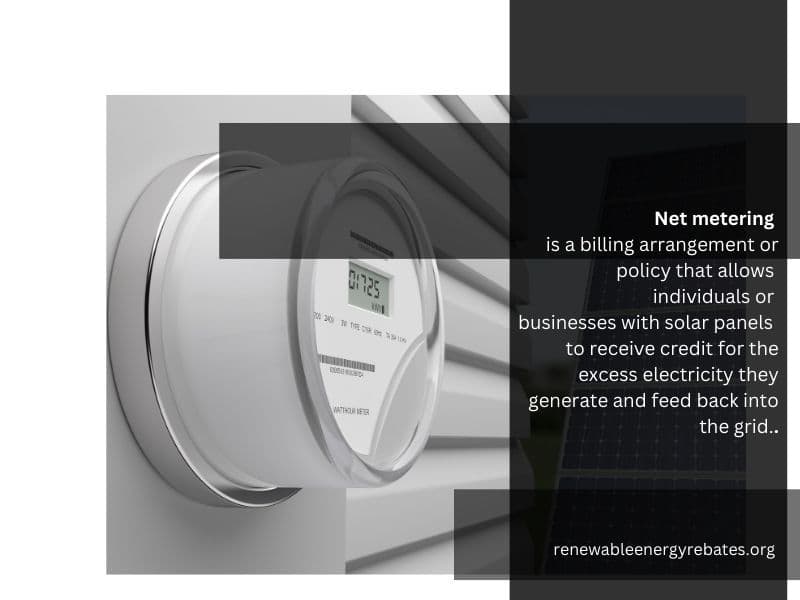
How Does Net Metering Work?
There are two general modes of operation for net metering programs:
- The excess energy produced by your solar panels is measured by your utility company
- A bill credit is posted to your account that can be used on future electricity bills.
The extra electricity produced by your solar panels is determined by the electric meter in your residence.
Modern power meters can measure electricity flow in both directions. They increase when you draw power from the utility at night and decrease when your solar panels produce excess power.
In either case, you will only pay for your net consumption at the conclusion of the billing period. Your net consumption is the difference between total consumption and total generation.
California’s Net Metering (Net 1.0) Policy
As long as the system is less than 1,000 kilowatts, both homeowners and businesses in California can utilize net metering to receive bill credits for the excess electricity that their solar panels generate (1 MW).
Electric utility customers who install solar panels can usually cut down on electricity costs, thanks to net metering in California.
The three investor-owned utilities in California, Pacific Gas & Electric (PG&E), San Diego Gas & Electric (SDG&E), and Southern California Edison, were each given a "limit" under the state's first net metering policy (SCE).
Five percent (5%) of the overall peak electricity demand was the maximum amount of solar installations allowed in each utility's service area. By the end of 2015, all three utilities were nearing their caps due to the Golden State's meteoric rise in solar energy.
The California Public Utilities Commission (CPUC) developed the "Net Metering 2.0" (NEM 2.0) scheme as a next-generation initiative to guarantee the success of solar for many years to come.
NEM 2.0: California’s Net Metering Policy
Net Metering 2.0 slightly modifies California's original net metering policy. However, it maintains the retail rate bill credits, making solar economical for California residents.
In addition to preserving retail rate bill credits, the net metering 2.0 program in California prohibits numerous fixed charges for residential customers. These include demand charges, grid access charges, installed capacity fees, and standby fees. NEM 2.0 continued until 2019.
Following the expiration of Net 2.0, the CPUC considered establishing a new program designed to account for the benefits of solar in various locations and at various times.
Three significant distinctions exist between the original Net Metering policy in California and Net Metering 2.0: time-of-use rates, interconnection fees, and non-bypassable charges. Compared to the original policy, the California Solar Energy Industries Association (CalSEIA) estimates that the cumulative effect of these adjustments will be approximately $10 per month.
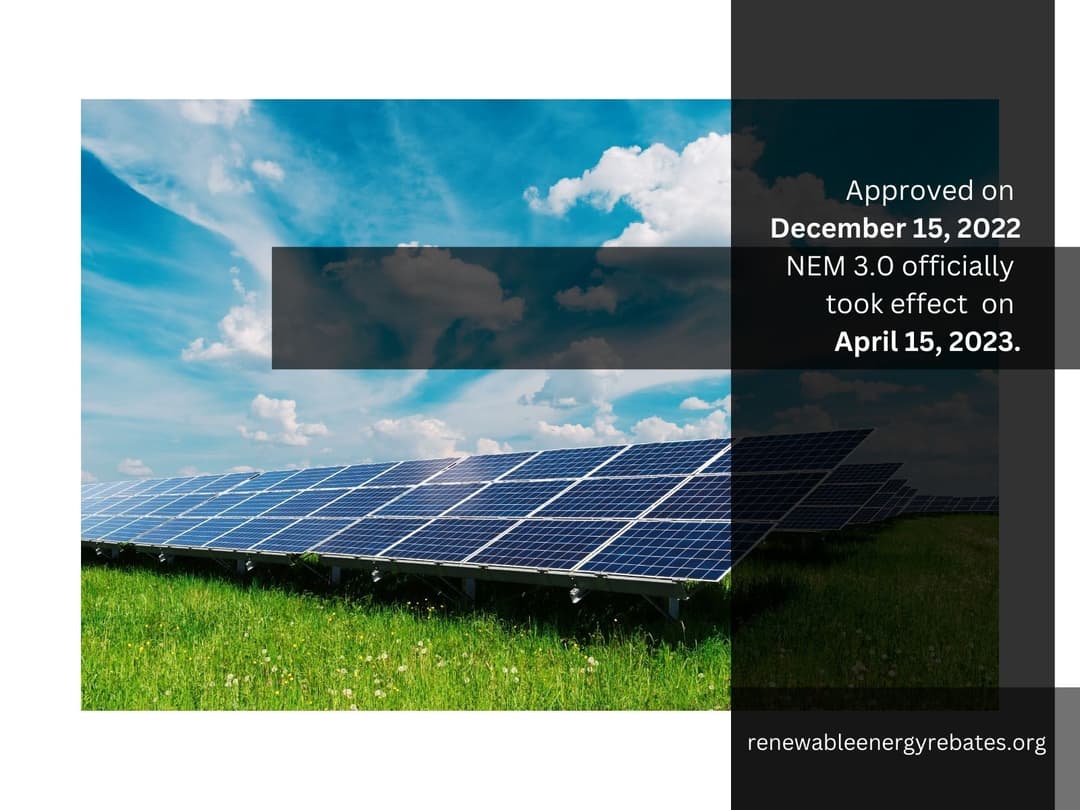
Net 3.0 California New Net Metering Policy
The California Public Utilities Commission (CPUC) fully approved NEM 3.0 (the third version of net metering) on December 15, 2022, after years of debate. To lock in NEM 2.0 rates for 20 years, you must submit a full interconnection application by April 14, 2023. After that date, the new tariff, NEM 3.0, will drastically lower net metering compensation rates for new California solar customers (by about 75%).
Reduced net metering credits
The primary effect of NEM 3.0 is a decrease in compensation for surplus electricity exported to the grid. If you export solar energy, you get credit equivalent to the wholesale price of electricity.
In the case of solar energy, the rate at which your exports are paid is known as "one-to-one net metering." It corresponds to the rate you are charged when drawing power from the grid.
Since NEM 3.0 departs from net metering and toward net billing, the worth of solar export credits is reduced.
The utility's payment for the electricity you feed back into the grid under NEM 3.0 will not be based on your normal electricity prices like a standard net metering credit but on a separate calculation based on the avoided cost of generating that electricity.
As of 2023, there are a total of 576 potential export rates, each of which depends on the time of day, the day of the week (i.e., weekday vs. weekend), and the month in which the energy is being shipped abroad.
The average rates of the avoided energy expenses amount to about 25% of retail electricity rates during those same hours. That's why under NEM 3.0, the worth of net metering certificates will decline by about 75%.
Discover the advantages of California's Net Energy Metering 3.0 program.
Read moreSelf-Generation Incentive Program (SGIP)
The Self-Generation Incentive Program (SGIP) has existed since 2001. The program rewards users for generating their own electricity through wind turbines, fuel cells, various types of combined heat and power (CHP), and advanced energy storage.
Assembly Bill 209 of 2022 expanded the program's eligibility to include solar photovoltaic systems incorporating energy storage technologies in private residences.
The SGIP aims to change the market for distributed energy resource (DER) technology market and contribute to lowering GHG emissions. SGIP is also geared towards decreasing demand and reducing customers' electricity consumption and bills.
Participants in the SGIP include retail electricity and gas consumers of Pacific Gas & Electric (PG&E), Southern California Edison (SCE) or Southern California Gas (SoCal Gas), and the Center for Sustainable Energy (CSE). In other words, these utility companies constitute the Program Administrators of the Self-Generation Incentive Program.
California’s Self-Generation Incentive Program Administrators
Potential incentives applicants can access information about the program and apply for incentive funding by contacting the following Program Administrators:
Pacific Gas & Electric (PG&E)
Email Address: selfgen@pge.com
Telephone: (415) 973-6436
Mailing Address: PG&E Payment Research
Attn: Self-Generation Incentive Program
PO Box 997310
Sacramento, CA 95899
Center for Sustainable Energy® (CSE)
Email Address: sgip@energycenter.org
Telephone: (858) 244-1177
Mailing Address: Center for Sustainable Energy
Attn: Self-Generation Incentive Program
3980 Sherman Street,
Suite 170
San Diego, CA 92110
Southern California Edison (SCE)
Email Address: SGIPgroup@sce.com
Telephone: (626) 302-0610
Mailing Address: Self-Generation Incentive Program
Southern California Edison
P.O. Box 800
Rosemead, CA 91770-0800
Southern California Gas Company (SoCalGas)
Mailing Address: Self-Generation Incentive Program
Southern California Gas Company
555 West Fifth Street, GT20B8
Los Angeles, CA 90013-1011
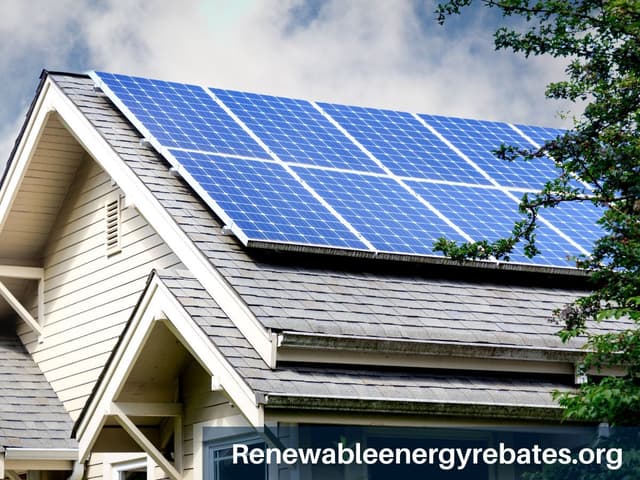
Everything you need to know about the California Self-Generation Incentive Program (SGIP)
Read moreSingle-Family Affordable Solar Housing (SASH) Program
The Single-family Affordable Solar Homes (SASH) Program offers eligible low-income homeowners rebates to help defray the initial investment in a solar electric system.
Established under the California Solar Initiative, the SASH Program is administered across the whole state by GRID Alternatives (GRID), a non-profit solar contractor.
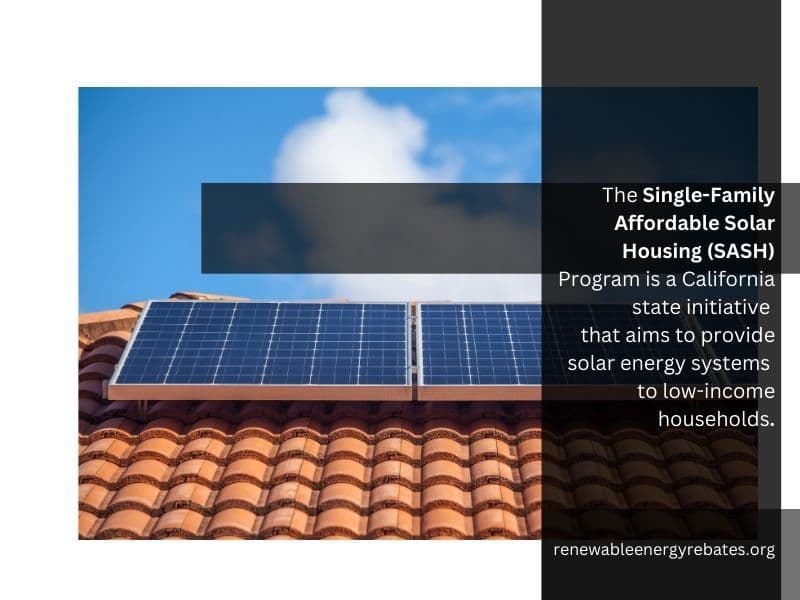
The SASH incentive was accessible to low-income homeowners in the service areas of Pacific Gas and Electric (PG&E), Southern California Edison (SCE), and San Diego Gas and Electric (SDG&E).
However, as of 2023, the program is now closed to new applicants throughout the state.
California created the SASH Program to fill a need for a comprehensive low-income solar initiative. The program is designed to not only provide financial incentives but also to encourage or provide energy efficiency, workforce development, green job training, and extensive community engagement with low-income communities.
Eligibility Requirements
To be eligible for the SASH 2.0 Program, the Applicant must satisfy the minimum requirements listed below:
- You must be a PG&E, SCE, or SDG&E customer.
- The project site must be located within the service territory of PG&E, SCE, or SDG&E and receive electric service from one of those utilities.
- The applicant/homeowner must occupy the property.
- The household's total income must be less than or equal to 80% of the area median income (AMI) based on the most recent income tax return available. Area Median Income is subject to annual alterations based on the Department of Housing and Urban Development income guidelines.
- The home must comply with California Public Utilities Code (P.U.) 2852.
Multifamily Affordable Solar Housing (MASH) Program
The Multifamily Affordable Solar Housing (MASH) Program is a California state incentive program that provides financial incentives for solar energy installations on multifamily affordable housing buildings.
Created in 2008, the incentive is typically offered in the form of a one-time rebate given at the end of a project.
The program was established too:
- Encourage the use of solar energy in the affordable housing sector;
- Enhance energy efficiency and general quality of affordable housing through the application of solar and energy-efficient technologies;
- Reduce electricity use and costs without raising monthly household expenses for residents of affordable housing buildings; and
- Raise understanding of the advantages of solar among residents of affordable housing and developers.
Learn More About the Multifamily Affordable Solar Housing (MASH) Program
Read moreState Solar Sales Tax Exemptions in California
California has two types of state solar exemptions in California:
- Sales and Use Tax Exemption for Electric Power Generation and Storage Equipment
- Partial Sales and Use Tax Exemption for Agricultural Solar Power Facilities
| Implementation Sector | State |
| Category | Financial Incentive |
| Incentive Type | Sales Tax Incentive |
| Administrator | California Department of Tax and Fee Administration |
| Start Date | 01/01/2018 |
| Expiration Date | 07/01/2030 |
| Eligible Renewable/Other Technologies | Geothermal Electric, Solar Thermal Electric, Solar Photovoltaics, Wind (All), Biomass, Combined Heat & Power, Fuel Cells using Non-Renewable Fuels, Landfill Gas, Hydroelectric (Small), Anaerobic Digestion, Fuel Cells using Renewable Fuels |
| Eligible Storage | Lithium-ion |
| Applicable Sectors | Commercial, Industrial, Agricultural, Appliance Manufacturers |
| Incentive Amount | 100% |
California Assembly Bill 1817 (AB 1817) exempts from sales and use tax "qualified tangible personal property used mainly in the generation or production, or storage and distribution of electric power."
If a contractor buys the equipment to fulfill a contract with a qualified individual, they, too, are exempt from paying sales tax on the purchase.
Additional structures that are "integral to the generation or production or storage and delivery of electric power" are also exempted.
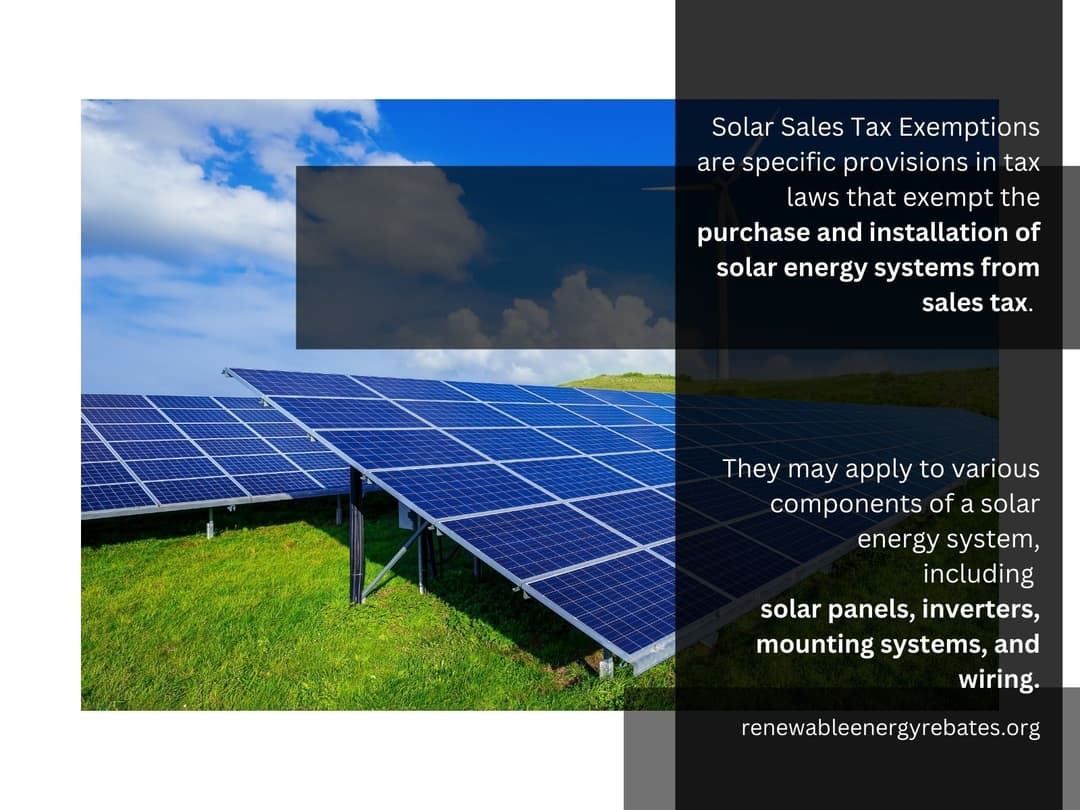
Partial Sales and Use Tax Exemption for Agricultural Solar Power Facilities
Programme Overview
| Implementation Sector | State |
| Category | Financial Incentive |
| Incentive Type | Sales Tax Incentive |
| Administrator | California Department of Tax and Fee Administration |
| Website | https://www.cdtfa.ca.gov/formspubs/pub235g.pdf |
| Eligible Renewable/Other Technologies | Solar Photovoltaics |
| Eligible Storage | Lithium-ion |
| Applicable Sectors | Agricultural |
| Incentive Amount | 100% of the taxes levied by the State. Local and district sales taxes will still apply. |
| Equipment Requirement | At least half of the electricity produced by the system must be used to power agricultural equipment. |
California partially exempts agricultural machinery and equipment from the state's sales and use tax. The exemption is only valid for state taxes and not for municipal sales and use taxes. Furthermore, the exemption does not extend to taxes imposed or administered under Revenue and Taxation Code sections 6051.2 and 6201.2, the Bradley-Burns Uniform Local Sales and Use Tax Law, the Transactions and Use Tax Law, or article XIII, section 35 of the California Constitution.
Photovoltaic (PV) systems that are installed to supply energy to agricultural equipment and machinery may be eligible for the partial exemption. This assertion was stated in a Special Notice issued by the California State Board of Equalization in November 2012.
Equipment and machinery used mainly in producing and harvesting agricultural products is exempt from some taxes. "Primarily" refers to the frequency of use of at least 50%.
According to the Special Notice, applicants must use at least half of the energy generated by the PV system to power agricultural machinery and tools.
There is no requirement for a hardwired connection between the system and the machinery. A net metering agreement with the local utility, the system can be connected to the grid and offset the farm's electrical use.
However, applicants must show that the farm machinery uses at least half of the energy generated by the PV system annually.
The exemption applies in part to leased devices as well.
California Property-Assessed Clean Energy (PACE) Financing
The California Property Assessed Clean Energy (PACE) program is an inventive method for funding upgrades to private property's energy efficiency and renewable improvements. There are PACE programs for:
- Commercial buildings (commonly referred to as Commercial PACE or C-PACE).
- Private buildings (commonly referred to as Residential PACE or R-PACE).
PACE initiatives for businesses and homes have a similar structure. With the help of PACE programs, a property owner can finance the initial cost of making energy-saving or other qualified upgrades to a property and then pay the costs back over time through a voluntary assessment. PACE assessments are distinctive because they are attached to the property rather than the person.
An existing structure called a "land-secured financing district," also known as an assessment district, a local improvement district, or another similar term, serves as the foundation for most PACE financing for renewable energy projects.
In a typical assessment district, the local government issues bond to pay for public works initiatives like underground utility lines, sewage systems, and streetlights.
Since renewable energy and energy efficiency are now included in this financing plan, property owners can make improvements without having to make a sizable cash outlay upfront.
Property owners who willingly sign up for a PACE program pay back their improvement costs over a predetermined period—typically 10 to 20 years—through property assessments that are secured by the actual property and added to the owner's annual property tax bills. The same consequences apply to nonpayment as to any other part of a property tax statement.

A PACE assessment is a debt of property, which means that it is connected to the land rather than the owner of the property (s). If the buyer agrees to take on the PACE obligation and the new first mortgage holder permits the PACE obligation to remain on the property, the repayment obligation may subsequently pass along with property ownership.
Benefits of PACE
- Enables the long-term, secure financing of comprehensive initiatives, increasing the number of cash-positive projects.
- Spreads out payments over a long period, rarely calls for an upfront payment, and does not require repayment of the loan upon sale or refinancing.
- Because of the high level of loan repayment security provided by the property tax bill, it can result in cheap interest rates.
- Aids some property owners in reducing their income tax obligations by deducting payments.
- Permits local governments to promote renewable energy and energy efficiency without risking general money.
- Utilizes significant streams of private funding.
Since its inception in 2007, the PACE program has grown and changed thanks to legislation and regulations passed at the state and federal levels. PACE program managers are private businesses that manage a PACE program on behalf of a government agency.
Governor Jerry Brown signed AB 1284 into law on October 4, 2017. In 2019, the PACE sector was first subject to licensing and regulation by the Department of Financial Protection and Innovation (FPID).
Administrators of PACE programs must observe the following legal requirements:
- Administrators of the PACE program must obtain verbal confirmation from the property owner regarding the main terms of the PACE assessment. Prior to signing the financing agreement, the property proprietor must verbally confirm the "Key Terms."
- Administrators of the PACE program must collect pertinent financial documentation from property owners in order to determine whether or not the financing is affordable. When approving financing (i.e. income and assets versus debt obligation and domestic expenses) and prior to beginning work pursuant to the financing contract, PACE program administrators must determine the property owner's reasonable ability to pay.
- PACE program administrators must evaluate the amount of financing relative to the value of the home in the same manner as a mortgage (i.e., the amount financed cannot exceed 15% of the property's value up to the first $700,000 and cannot exceed 10% of the property's value above $700,000).
Renewable Energy in California
After Texas, California generated the second-highest amount of energy from renewable sources in the country in 2021. Small-scale solar PV production was also included in this generation.
In terms of generating energy from solar, geothermal, and biomass sources, California leads the country. After Washington, Oregon, and New York, the state produces the fourth-largest amount of energy from conventional hydroelectric power in the country. The sixth-largest producer of power from wind energy is California.
Solar
The deserts of California's southeast contains the majority of the state's solar energy. All of its solar thermal facilities as well as the majority of its biggest solar.

The state's photovoltaic plants are situated here. However, the province is home to solar PV facilities. 17% of the state's utility-scale electricity net production in 2021 came from solar energy.
Solar energy accounted for 25% of the state's overall net electricity generation when small-scale solar generation is taken into account.
California generated 69% of the nation's utility-scale solar thermal electricity in 2021 and 32% of the country's overall solar PV electricity. California had nearly 15,500 megawatts of utility-scale solar electricity capacity by December 2021.
The state's overall solar capacity was close to 28,000 megawatts when small-scale facilities are taken into account.
California Household Profile
In 2020, California's total energy consumption per capita was 175.3 million British thermal units (Btu). This ranked the state 48th on the list of states' total energy consumption per capita in the United States.
The residential sector contributed 38.2 million Btu, according to additional analysis of this data by the end-use sector.
This figure ranked California as the 50th state in the United States. Other sectors' per capita energy consumption estimates are as follows: commercial (34.4 Million Btu), industrial (43.1 Million Btu), and transportation 59.6 Million Btu.
